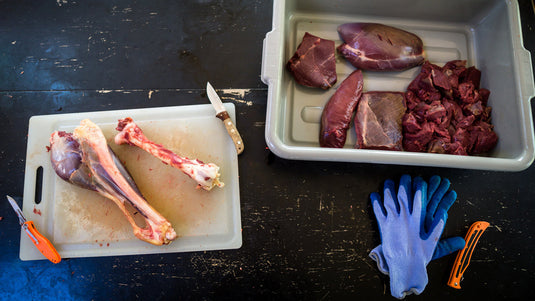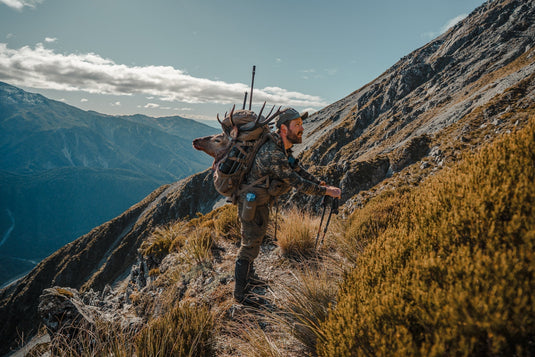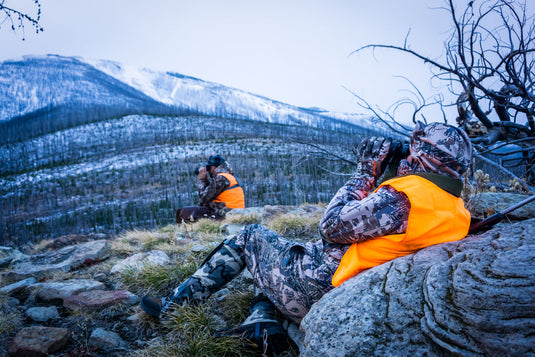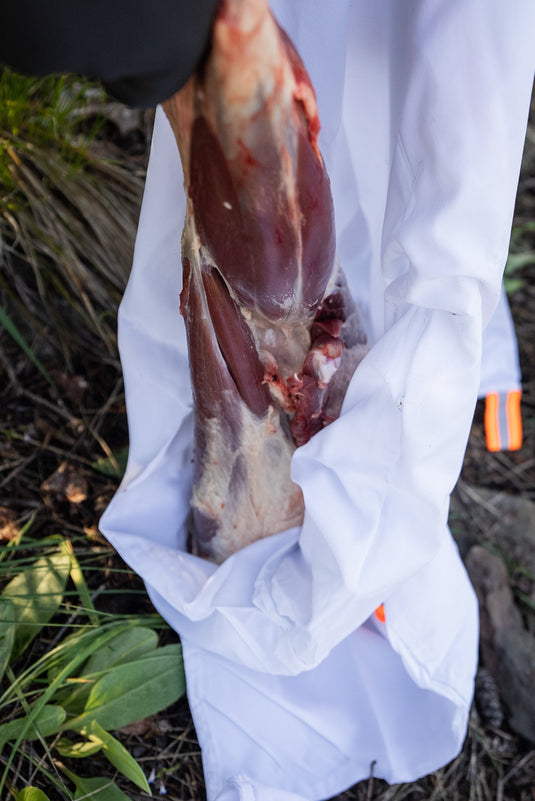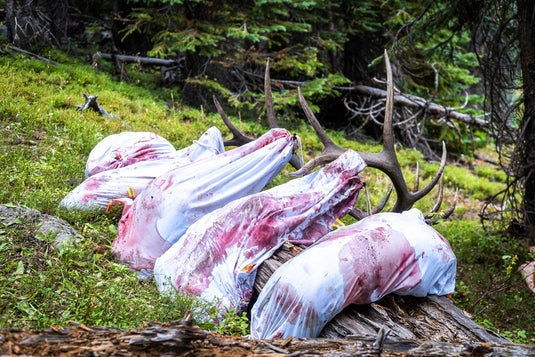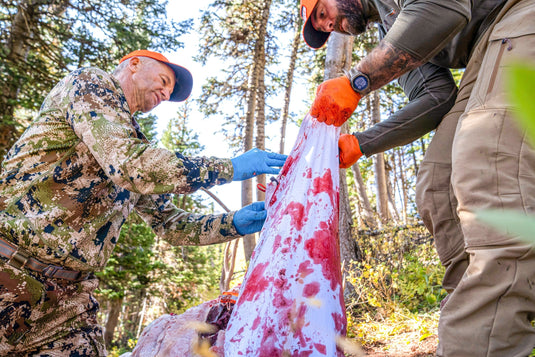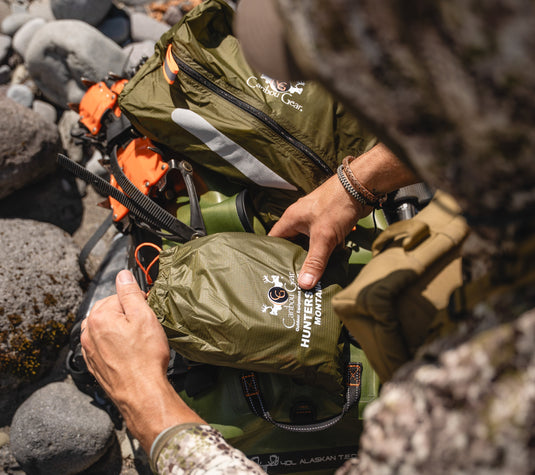Backpack hunts aren’t just for bow season. When many hunters opt for wall tents and comfy base camps during the later rifle seasons, backpack hunting can be an excellent strategic move.
As soon as there’s snow on the ground or temperatures are dropping well below freezing at night, many hunters have no interest in backpacking. Which is exactly why it can be so effective. You can use the concentrated pressure around road systems to your advantage and hunt unpressured pockets more effectively. Of course the biggest downside to late season backpacking, is the weather.
Staying comfortable on a late season backpacking trip requires quality clothing and a good sleep system. With those things, you can enjoy backpacking year-round. For some specific tips on cold weather clothing, see this previous article.
After a good layering system, the next critical thing you’ll need is a great sleep system. This will include your sleeping pad, sleeping bag, shelter and any other accessories that will help you get a good night’s sleep in cold weather conditions…

Don’t Underestimate Your Sleeping Pad
For the purposes of this article, we’ll cover a cold-weather sleep system from the ground up. And that’s because a sleeping pad is probably the most overlooked part of any setup.
Not all sleeping pads are created equal. And when backpacking in cold weather, an insulated pad is absolutely essential. When looking at sleeping pads, pay close attention to the R-Value listed on the pad. Just like the temperature rating on a sleeping bag, this number gives you an idea of the insulating ability of any pad.
For reference, a typical lightweight, closed-cell foam sleeping pad has an R-Value of 1 to 2. In a cold weather pad, you’re looking for an R-Value of 4 or more. So, you should leave that foam pad at home and bring something with much more insulating value. One good option is the Klymit Insulated Static V Lite Pad, which has an R-Value of 4.4.
The purpose of an insulated sleeping pad is to trap the warm air produced by your body, and use it as a layer of insulation between you and the frozen ground. An insulated sleeping pad does this much more efficiently.
Upgrade Your Bag and Add a Sleeping Bag Liner
Staying comfortable on the coldest nights requires a great sleeping bag. For backpacking, we recommend high quality goose down (800 fill or higher) for the best warmth-to-weight ratio. Nothing is as warm for as little weight as down. A zero-degree sleeping bag is a great choice for late season backpacking.
In addition to a quality sleeping bag, it might be a good idea to add a lightweight sleeping bag liner. If your sleeping bag is not quite up to the task of camping in very cold weather or if you just need a little extra insulation, a liner can be an inexpensive way to boost its temperature rating. For that reason, we highly recommend the Klymit Nest Sleeping Bag Liner. This micro fleece bag liner adds warmth, plus it’s machine washable, keeping your sleeping bag clean.

Change the Game with an Ultralight Hot Tent
By far the biggest game changer for us over the past 10 years has been the addition of Seek Outside tents along with their packable titanium wood stoves. We’ve spent November nights deep in the backcountry, relaxing in our tent in t-shirts while it’s snowing and freezing outside. And no surprise, those have been some of our most successful hunting trips.
For a much more detailed look at why we love these tents from Seek Outside, see our previous article on that subject. But for the purposes of this article, we will keep it brief and say that no other shelter we’ve used offers the combination of a spacious design, ulra-lightweight for backpacking, and the option to add a lightweight, packable wood stove.
For example, one of our favorite tents is the Seek Outside Redcliff. With a peak height of 6’ 10” there’s enough room to stand up and get dressed, no more crouching around in a tiny backpacking tent. This tent can comfortably sleep four hunters and gear without a stove, or three people with a wood stove.
What’s amazing is that a tent with all this space weighs just over 5 pounds, including the stakes and pole. And if you decide to add a Seek Outside titanium wood stove and stovepipe, you can do that for as little as an additional 2.5 pounds.
With the combination of a good sleeping pad, a quality bag and a great shelter, you can confidently go backpacking in any conditions.
Contact Us With Questions
If you’d like help picking out the right backpacking gear for your next hunting adventure, please let us know. And be sure to check out all the great gear we carry in the Caribou Gear Store.

By Ryan McSparran
Ryan is a wilderness guide based in Colorado, and is proud to be a part of the team at Caribou Gear.








